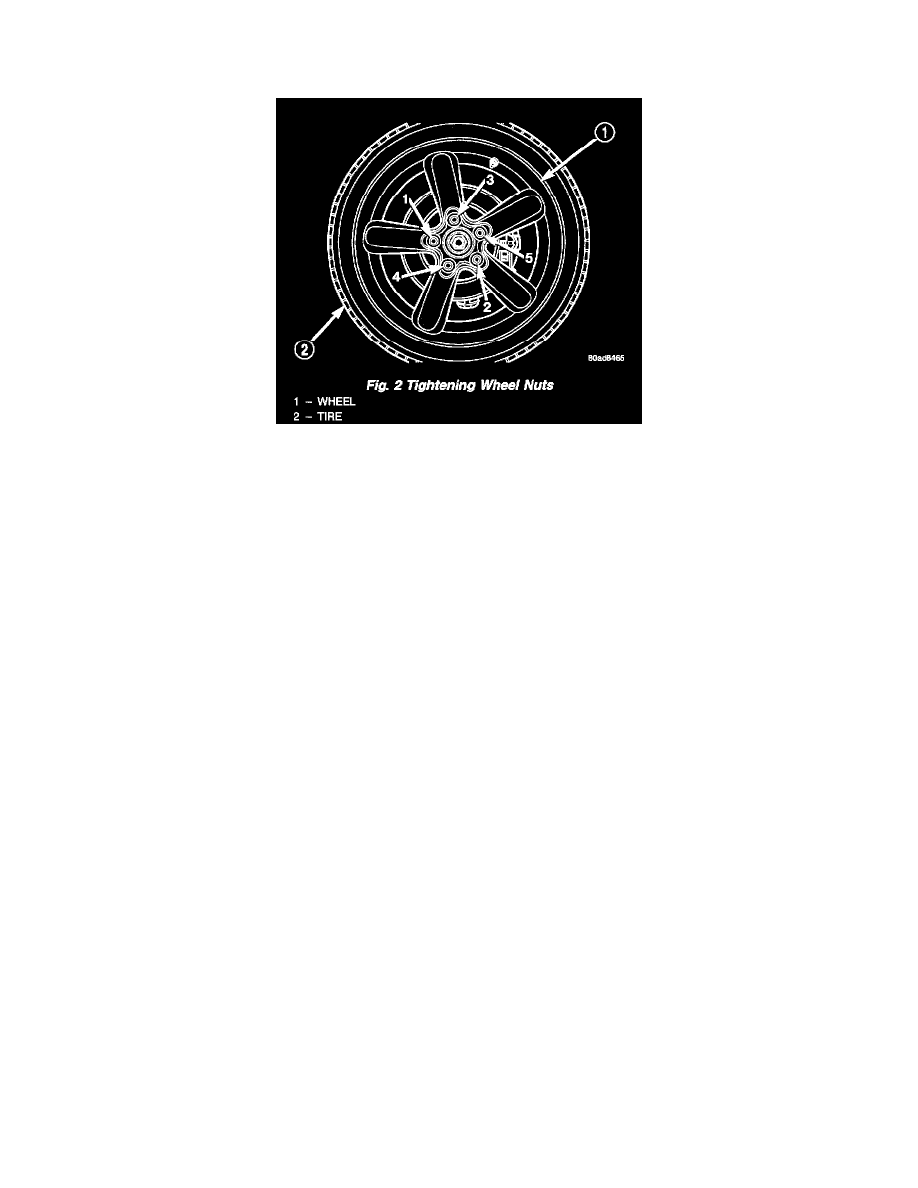Prowler V6-3.5L VIN G (1999)

Wheels: Service and Repair
Installation
The wheel studs and nuts are designed for specific applications and must be replaced with equivalent parts. Do not use replacement parts of less quality
or a substitute design. The aluminum wheels used on this vehicle have wheel stud nuts which feature an enlarged nose. This enlarged nose is necessary to
ensure proper retention of the aluminum wheels.
Before installing the wheel on the hub, be sure to remove any build up of corrosion on the mounting surface of the wheel and the hub. Installing wheels
without good metal-to-metal contact could cause loosening of the wheel nuts. This could adversely affect the safety and handling of the vehicle.
CAUTION: When installing the wheel never use oil or grease on the threads of the wheel mounting studs or the wheel attaching nuts.
To install the wheel, first position it properly on the mounting surface using the hub pilot as a guide. All wheel nuts should first be lightly tightened in the
proper sequence. Then progressively tightening them in the proper sequence to a torque of 122 Nm (90 ft. lbs.).
WARNING: Failure to use equivalent replacement wheels may adversely affect the safety and handling of the vehicle. Replacement with used
wheels is not recommended. The service history of the rim may have included severe treatment or very high mileage. The rim could fail without
warning.
Original equipment replacement wheels for this vehicle are available through your dealer and should always be used if a wheel requires replacement. If a
replacement wheel is obtained through a source other than a dealer, the wheel must be equivalent in load carrying capacity. The physical dimensions
(diameter, width, offset, and bolt circle) of the wheel must also be the same as the original wheel.
